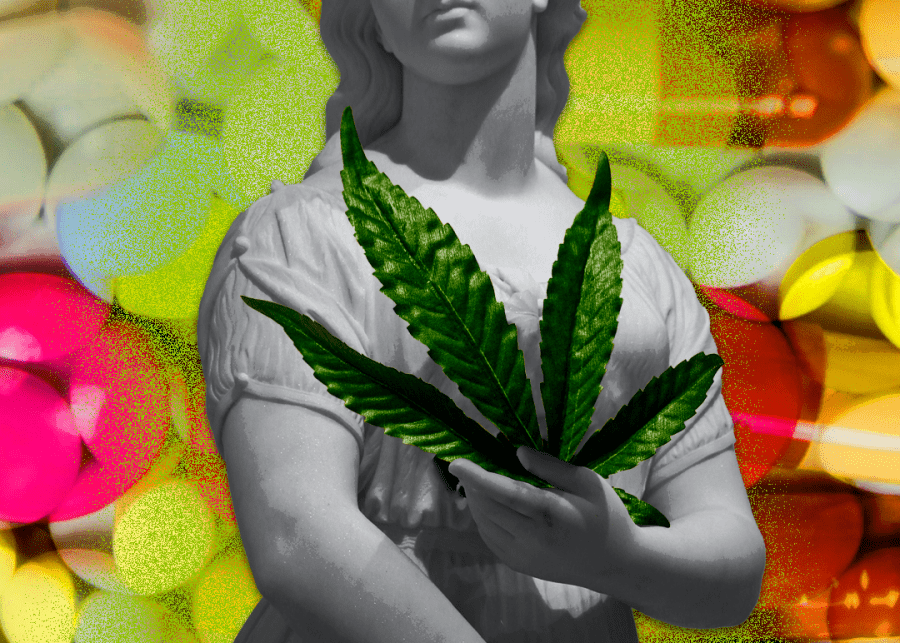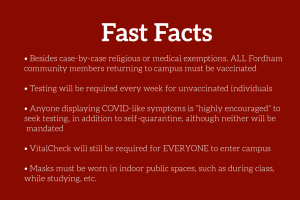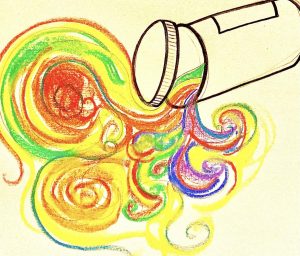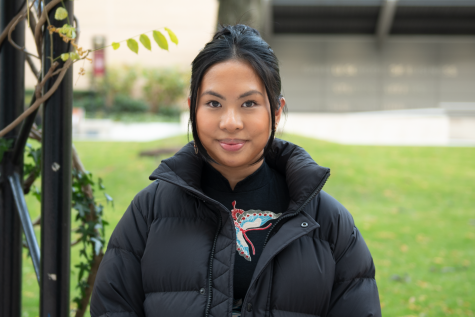The Big Smoke: Breaking Away From Addictive ‘Benzos’ and Opiates
Medical cannabis proves its worth against the addictive class of benzodiazepines and opiates
There may not be a clear solution, but cannabis could be an alternative to combat addiction, mental illness, pain and PTSD.
September 4, 2021
Ignorance allows people to lean on their stereotypes, so cannabis gets the bad stink. But does it provide anything good besides a graceful daze, or are its effects more sinister?
The Big Smoke
“Regular” THC found in cannabis is not synthesized in a lab but rather extracted from hemp, whereas synthetics like Delta-8 products are synthetically produced from CBD extracted from hemp and then put through isolation and distillation.
K2 was a popular synthetic cannabinoid in the late 2000s and early 2010s. The problem with K2 was the lack of uniformity. Some of the chemicals mixed weren’t even synthetic cannabinoids; instead synthetic opioids, hallucinogens or even rat poison could be found in the drug.
Tamera Harris, a substance abuse counselor in Queens and Suffolk County, New York, remembered K2 and the resultant wave of illnesses and deaths.
“It was bizarre behavior all over the streets where they (the individuals using K2) would do things they’d never do before like undress, (and) run around naked,” Harris said. 2014 alone saw 37,500 cases of seizures and 3,682 reports of poisoning linked to K2 usage in the U.S.
The owner of a popular smoke shop on Veterans Memorial Highway in Ronkonkoma, New York, known as Abar, commented on his distribution of synthetic cannabis. He had been selling Delta-8 THC, which is the most popular synthetic cannabis available in the states, while also managing to get his hand on Delta-9. According to The New York Times, Delta-8 sits at the top as the fastest-growing product in the cannabis industry.
The lack of uniformity in the synthetic cannabinoids, like Delta-8 and K2, adds to the unpredictability and the risk.
The 2018 Farm Bill reversed the decades-long ban on hemp, or cannabis containing less than 0.3% Delta-9 THC (far lower than what normally induces a “high”), and allowed for the sale and distribution of hemp derivatives. This was a major victory for the CBD industry, allowing for the expansion of its selection for consumers and lower pricing.
Delta-9 THC, the ingredient responsible for anxiety or paranoia side effects, differs from Delta-8, the synthetic cannabis. Users describe the experience of synthetic cannabis as more physical and as a mild “buzz.”
The lack of uniformity in the synthetic cannabinoids, like Delta-8 and K2, adds to the unpredictability and the risk. Chemicals added to synthetic products are either sprayed on dried “plant material” or sold in oils for vaporizing, and can consist of synthetic opioids or hallucinogens.
Perhaps more troubling from the start is its trait of addiction which is relatable to opioids and benzos.
Synthetic cannabinoids are intended to produce the same effects as Delta-9 THC, their federally illegal cousin. However, with over 500 identified chemicals, the “high” with synthetics is synergistic via the entourage effect, where cannabis’ active chemicals co-op work to create effects not present from simply one chemical.
Synthetic cannabis users have reported elevated moods. Additionally, suicidal ideation, violent behavior, rapid heart rate and vomiting are some of the documented life-threatening side effects.
Withdrawal symptoms similar to THC are also an effect of synthetic cannabinoids, which include headaches, anxiety and depression. Overdosing can cause severe consequences and death can also occur with the lacing of filler products such as synthetic opioids. Perhaps more troubling from the start is its trait of addiction which is relatable to opioids and benzos.
It took until the 1980s for Lader and his team of researchers to find the serious risks of benzos, and yet they still remain very popular.
Opioids and Benzos
New York state’s Compassionate Care Act of 2016 called for the use of medical marijuana for the treatment of “debilitating or life-threatening diseases, or conditions that cause chronic pain” to combat Long Island’s opioid epidemic. The 2018 Compassionate Care Act added treatment for epilepsy, Parkinson’s disease and post-traumatic stress disorder (PTSD).
With these laws, New York politicians aimed to combat opioids and benzos. Benzodiazepines, or “benzos,” are a class of psychoactive drugs used to treat depression of the nerves within the brain and anxiety. Opioids, the other class of worrisome drugs, include heroin, synthetic opioids and legal pain relievers. Both are dangerously addictive and contribute to addiction problems across the country.
Benzos attach to receptors in the brain activating neurotransmitters known as GABA. GABA release makes individuals calm and sleepy. Benzos can work in a matter of minutes, and at the time were considered a “medical miracle.” Benzos are typically prescribed for longer than their recommended usage which may explain elevated tolerance levels and addiction. Coming off of benzos can be quite difficult as it may worsen anxiety, and induce panic attacks or seizures. Malcolm Lader, a psychologist and pharmacologist at King’s College London in the UK, found individual users would be on the original dose and still have problems trying to come off of benzos. It took until the 1980s for Lader and his team of researchers to find the serious risks of benzos, and yet they still remain very popular.
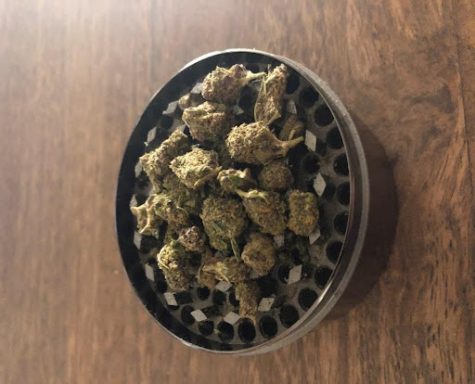
“This is where it starts, surgeons give (the) opioids, but the prices are so high some people turn to (the cheaper alternative) heroin,” Harris said. “In most cases, people just can’t quit.”
Harris continued about her clients: “we do harm reduction to take less (of the drug), but there’s no guarantee the client I see today will walk through the doors tomorrow.” Since there was no knowing for sure if her clients would listen, endorsing to take less of the drug seemed like a middle ground.
However, it’s not. Opioids and benzos being synthetic have similar characteristics to synthetic cannabis, not to mention their addictive qualities. Cannabis can offer a similar reduction in stress and/or pain at the cost of a minor daze. Opioids are not used for PTSD, and benzos are not typically prescribed but may provide some relief to PTSD stressors like anxiety, but not PTSD itself. Cannabis is the best fit for PTSD relief among the three as there are no significant links to addiction, very little to no unwanted side effects, and is already endorsed by many across the country as a remedy.
The real problem with cannabis lies in how it is consumed. Smoking is generally never healthy, though cannabis is not like tobacco with its added chemicals and tar. However, cannabis smoke may include ammonia, hydrogen cyanide and formaldehyde. Some of those chemicals are known to be cancer-causing, but right now there is no proof smoking cannabis causes lung cancer like cigarettes. People who do smoke cannabis can show signs of damage and precancerous changes in their lungs, but typically it is scarring similar to what one would get from pneumonia.
Another issue associated with smoking cannabis is dry mouth, which can easily lead to tooth decay without notice. There are many remedies to fight off dry mouth such as pilocarpine. Dr. Julie Mathew of Mathew Dental recommends it even over 0% alcohol dry-mouth washes and lozenges. Then again, if you don’t want to deal with any of the hassles of smoking, there are always edibles and tinctures but the effects are not the same.
“One of my biggest fears is being out of control, feeling unsafe.”Emilie Grey, substance abuse counselor
PTSD and a Little Cannabis
The Mayo Clinic defines PTSD as a mental health condition that is triggered by a terrifying event — either experiencing it or witnessing it. Symptoms include flashbacks, severe anxiety and uncontrollable thoughts about the event. Emilie Grey, a substance abuse counselor, understands PTSD as a “constant conscious awareness.”
“One of my biggest fears is being out of control, feeling unsafe,” Grey said.
The feelings were associated with witnessing her childhood home burn to the ground. She remembered the event with precise detail, from the heat and the burnt smell to the crackling of the flames.
She continued, “When you have trauma growing up, it tends to manifest in other trauma if you haven’t dealt with it.” She only became aware of her PTSD as an adult after a formal diagnosis and now treats others who have experienced trauma.
“Anything outside of my routine would put me in a tailspin,” Grey said. She tried benzos like Xanax and Klonopin, but she felt they impaired her cognitive abilities making her feel less in control.
People living with PTSD in several states, including New York, have the ability to treat their PTSD through cannabis as opposed to using benzos.
Grey also believed that treating her clients’ PTSD with cannabis worked wonders for him.
When asked about “as needed” treatments, also known as pro re nata (PRN), Grey commented on one of her clients who used medical cannabis almost daily. He had frontal lobe damage from an assault which led to residual and unmanageable PTSD. With “any unresolved trauma,” she said, “it’ll come back up.”
Grey also believed that treating her clients’ PTSD with cannabis worked wonders for him. He was able to sleep without nightmares or night terrors and could even get through his workdays. As Grey stated, “There’s a baseline level in order for people to operate through the day” and treatment with cannabis provided that for her client.
Differing Views
While the legalization of cannabis has come a long way for both recreational and medical treatment purposes, there are still unintended consequences of use.
Opposing viewpoints to the clamor surrounding cannabis are scientifically based. Cannabis changes the brain’s natural reward system, scrambling neural signals — which may be why users experience “the munchies.” THC may also increase the “neural noise” or random neural activity in the brain. Psychosis-like symptoms, therefore, may be caused by this neural noise combined with those who are at the most significant risk of psychosis episodes.
Mental health can also be affected as feelings of anxiety and paranoia may manifest along with temporary psychosis, all of which can also cause long-lasting mental disorders, including schizophrenia.
The increased risk of schizophrenia is linked to the thinning of the brain’s cortex or the outer layer of the brain. Adult daily smokers, of at least four years, typically have a smaller volume of gray matter in the orbitofrontal cortex of the brain. Furthermore, research conducted by Manzar Ashtari of the Children’s Hospital of Philadelphia demonstrates a link between frequent cannabis use and addiction. The problem with this study is the lack of diverse subjects. Fourteen of the subjects had a history of cannabis use from the age of 13 to 18 or 19. Five of the 14 subjects with heavy cannabis use also reported a history of alcohol abuse, which may have contributed much of the brain abnormalities typically linked to addiction. It’s possible that patients were already predisposed to drug dependence rather than cannabis itself causing brain abnormalities.
Moreover, people under the age of 18 who have used cannabis are at an increased likelihood of an IQ drop. The reasoning for the possible IQ drop is that the brain is not finished developing. Some suggest that the brain is fully matured by the minimum age of 20, others believe the mid-20s and possibly until the 30s. The primary consensus is that the brain is fully developed by age 25. Drastic changes occur in the prefrontal cortex during the ages of 18 to 25. The prefrontal cortex is essentially the development of one’s executive functioning, planning, social behavior, and personal expression. This is why those over the age of 25 tend not to feel sensitive to peer pressure.
There may not be a clear solution, but cannabis could be an alternative to combat addiction, mental illness, pain, and PTSD, and could be a substitute for controlled substances.
Furthermore, the CDC claims developmental disabilities are on or before the age of 17, lowering the at-risk age. But it should be understood these ages are marked as developmental milestones that are very delicate and absolutely necessary for proper adult development. Cannabis may or may not lower IQ, but it won’t stunt the progress of neurological development like a developmental disability. Those that use cannabis should have the same or maybe even less caution when drinking alcohol.
These concerns provide necessary inquiry into the health effects of cannabis and its use as an alternative to benzos and opioids. The FDA is already in the process of cannabis approval, but there isn’t a true need for it, unlike the vaccines. Cannabis seems like it’s en route, but that is up to the several entities spanning from regulation, government, and the financial sector.
There may not be a clear solution, but cannabis could be an alternative to combat addiction, mental illness, pain, and PTSD, and could be a substitute for controlled substances. It’s 2021 and New York, one of the most regulated states in the U.S., has now decriminalized cannabis. Maybe with some awareness and federal distribution, America won’t lose more of its precious youth, nor have its people continue to suffer.

